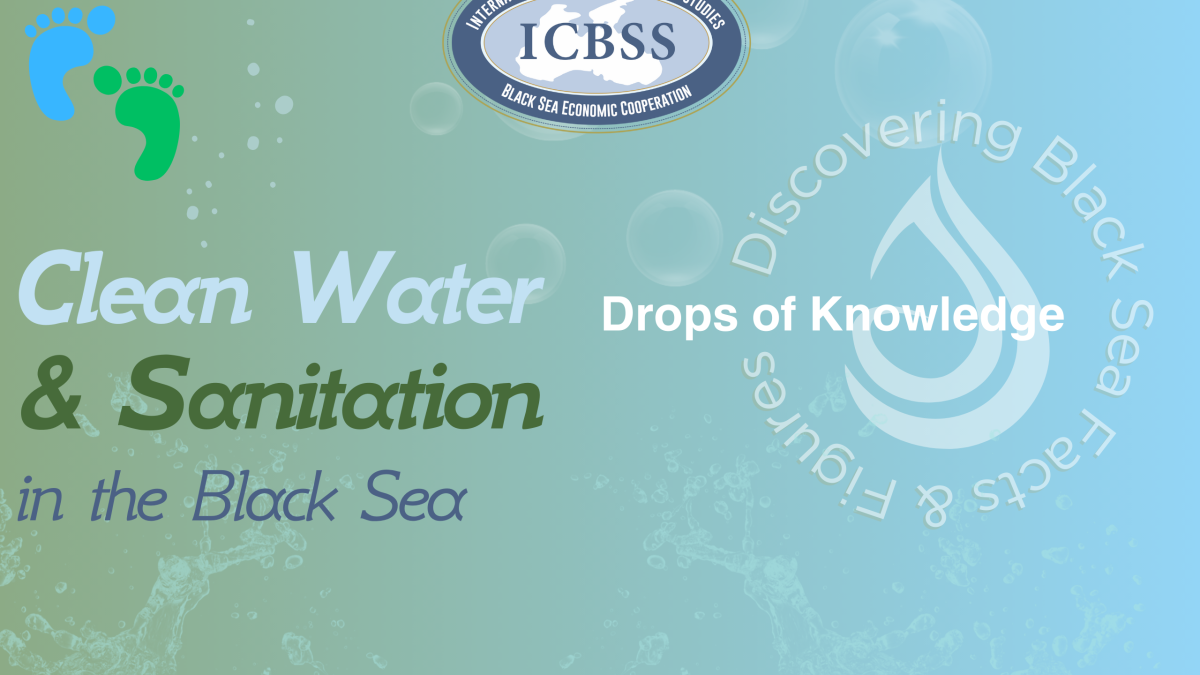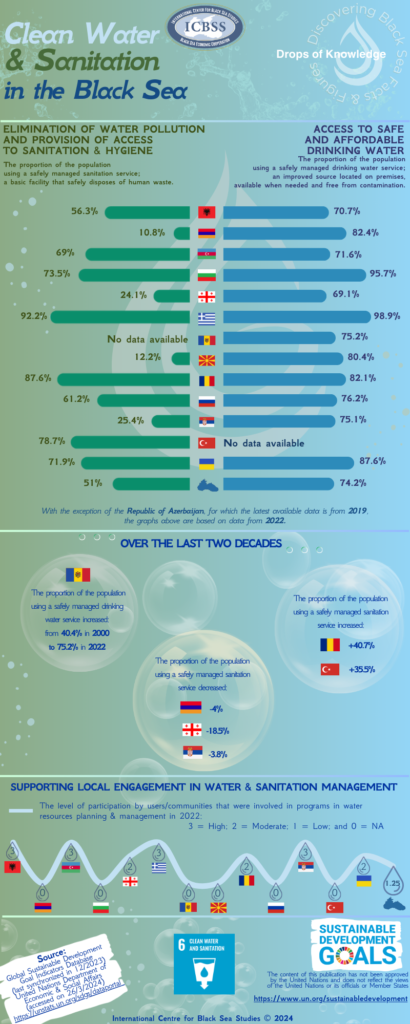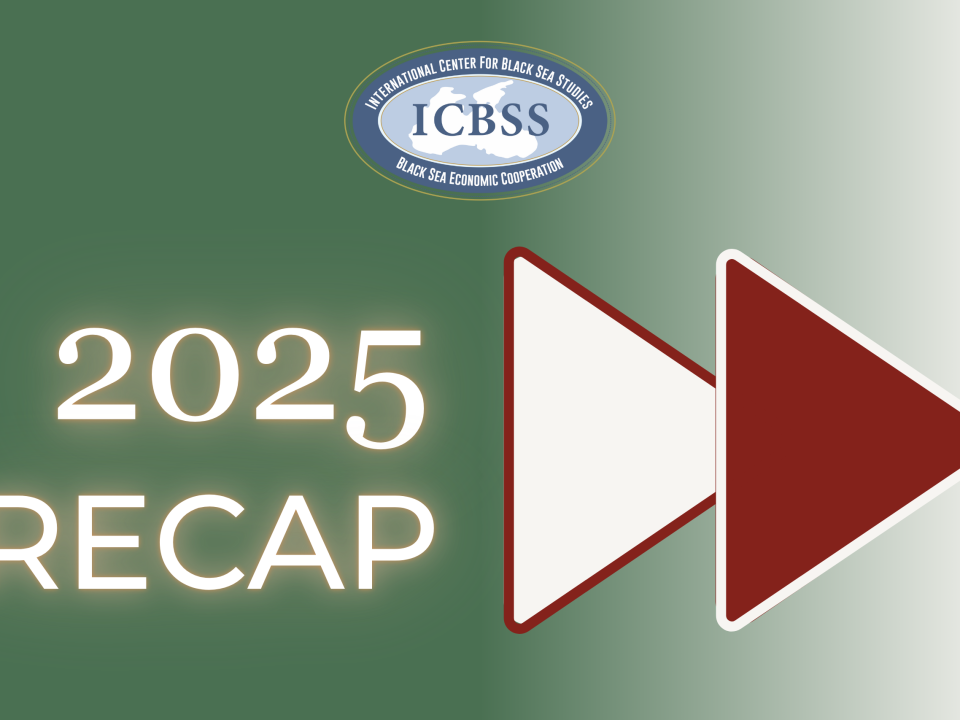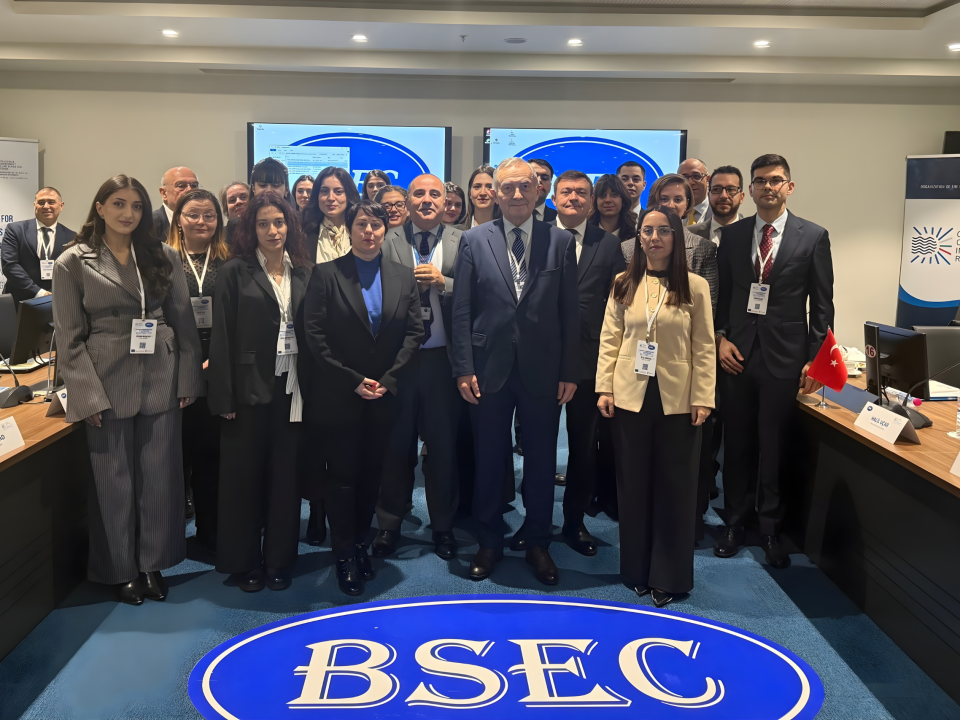
Drops of Knowledge – Discovering Black Sea Facts & Figures
Clean Water and Sanitation in the Black Sea
2 April 2024
On the occasion of World Water Day (22 March), this infographic includes data from the thirteen BSEC countries regarding the UN Sustainable Development Goal 6 “Clean Water and Sanitation”. This Goal declares the importance of “ensuring availability and sustainable management of water and sanitation for all”.
The infographic focuses on the following:
- Indicator 6.1.1: Proportion of population using safely managed drinking water services. Drinking water services refers to the accessibility, availability and quality of the main source used by households for drinking, cooking, personal hygiene and other domestic uses. This indicator builds on the MDG indicator, “proportion of population using an improved drinking water source”, but also incorporates aspects on quality, and availability to further address the normative criteria of the human right to water.
*UN SDG Target 6.1 by 2030: to achieve universal and equitable access to safe and affordable drinking water for all.
- Indicator 6.2.1a: Proportion of population using safely managed sanitation services. Safely managed sanitation services refer to the hygienic management of excreta from the facilities used by individuals, through the use of improved sanitation facilities, which are not shared with other households and where excreta are safely disposed in situ or transported and treated off-site. To ensure public health beyond the household level, this indicator incorporates the safe management of waste along the entire sanitation chain, from containment to treatment.
*UN SDG Target 6.2 by 2030: to achieve access to adequate and equitable sanitation and hygiene for all and end open defecation, paying special attention to the needs of women and girls and those in vulnerable situations.
- Indicator 6.b.1: Proportion of local administrative units with established and operational policies and procedures for participation of local communities in water and sanitation management.
*UN SDG Target 6.b: Support and strengthen the participation of local communities in improving water and sanitation management.
HIGHLIGHTS
According to the UN statistics, 25.8 % of the population in the 13 BSEC countries lacks a safely managed drinking water service, while a noticeable 49% still do not have access to a safely managed sanitation service.
Regarding the use of safe drinking water, the Hellenic Republic has the highest performance rating at 98.9%, while the Republic of Moldova shows the highest percentage increase (from 40.4% in 2000 to 75.2% in 2022).
As for sanitation, Romania has the highest percentage increase (from 46.9% in 2001 to 87.6% in 2022). In 2022, fewer people use safely managed sanitation services in the Republic of Armenia, the Republic of North Macedonia, the Republic of Serbia and Georgia which has the largest decrease (from 42.6% in 2000 to 24.1% in 2022).
At the same time, the Black Sea average for supporting local participation in water resources planning and management stands at a mediocre 1.25 points –where 3 is the highest.
Source: Global Sustainable Development Goal Indicators Database (last synchronized in December 2023), United Nations Department of Economic and Social Affairs, https://unstats.un.org/sdgs/dataportal (accessed on 26 March 2024)
***




